.
Garden Diary - February 2016
If you have any comments, observations, or questions about what you read here, remember you can always Contact Me
All content included on this site such as text, graphics and images is protected by U.S and international copyright law.
The compilation of all content on this site is the exclusive property of the site copyright holder.
February
Orchidelirium at the New York Botanical Garden
Thursday, 25 February 2016
The mad, consuming passion for orchids. These days, when you can add a potted orchid to the shopping cart while buying groceries at the supermarket or at the big box store while picking up a can of paint it seems strange to regard orchids as the focus for extremes, when explorers risked life and limb to secure these exotic and captivating flowers. But so it was back in the19th century when the Victorian mania for these plants drove collecting to the rape of the jungles of South America and Africa, Madagascar and elsewhere. Today, given the calm that time and space has provided, we can peacefully explore the Orchidelirium. That's the name of the exhibition in the Enid A. Haupt Conservatory of The New York Botanical Garden which will be open to the public from Saturday, 27 February through Sunday, 17 April 2016.
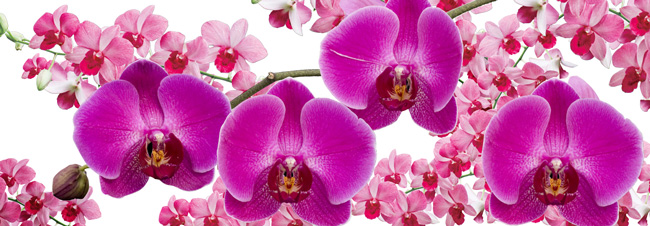
image courtesy of the New York Botanical Garden
The goal of orchidelirium: to share with visitors the far-flung adventures of orchid hunters of 19th-century, swept up by the consuming mad passion for orchids, risking life and limb to secure these exotic and captivating flowers.
image courtesy of the New York Botanical Garden
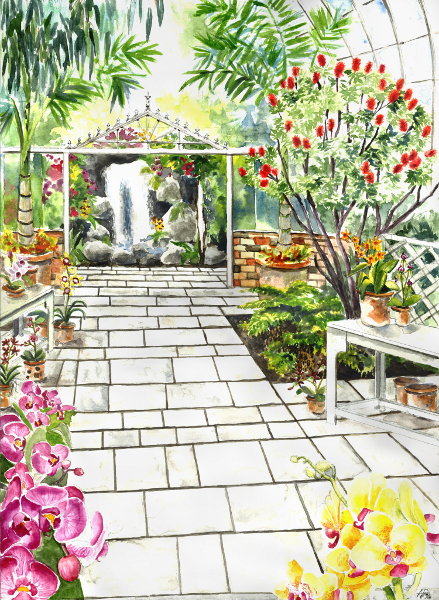
This concept rendering, a soft focus intimation
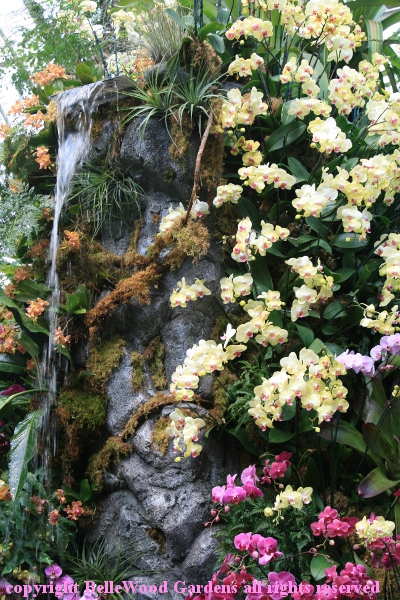
of how the gallery will be transformed.
There are some orchids with which you might be familiar, such as

Moth orchid, Phalanopsis, readily available and easily grown as a house plant, and
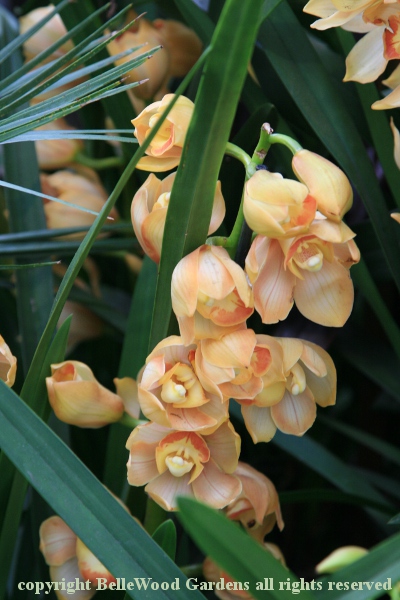
Cymbidium is another popular orchid. As one of the Four Gentlemen, in Chinese art
it symbolizes Spring and is one of the first subjects for the sumi-e novice.
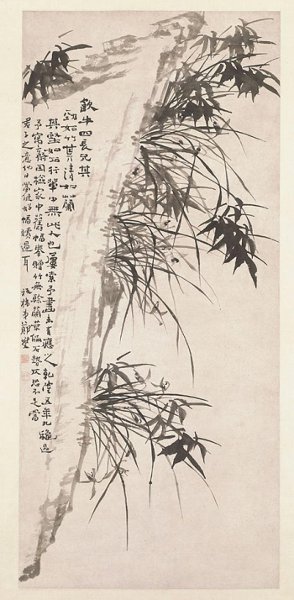
by Zheng Xie, Qing dynasty. Hanging scroll, ink on paper
Dated before autumn of 1740
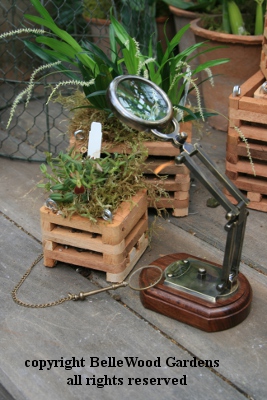 . . .
. . . 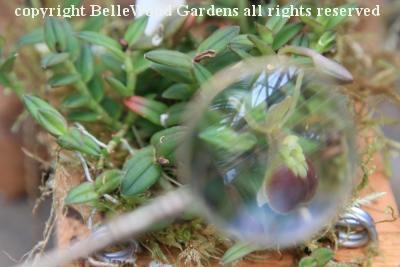
This, the 14th annual Orchid Show, has the greatest diversity on display. For example,
this dainty miniature best viewed with the conveniently at hand magnifying glass.
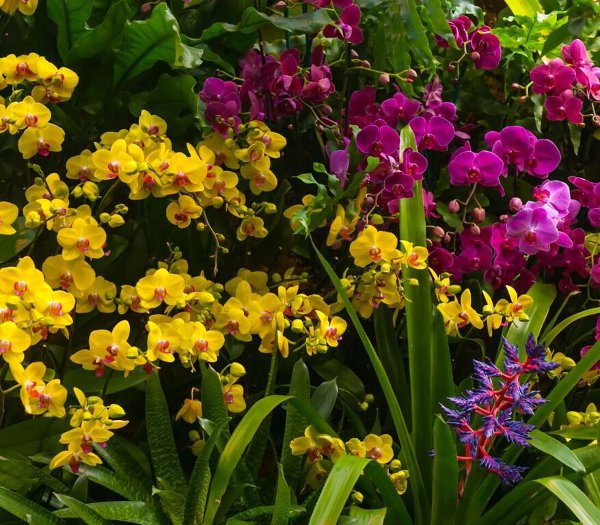
image copyright Peter Craig all rights reserved
Bright yellow and rich wine burgundy orchids, a spike of purple bromeliad flowers.
Splendidly vivid.
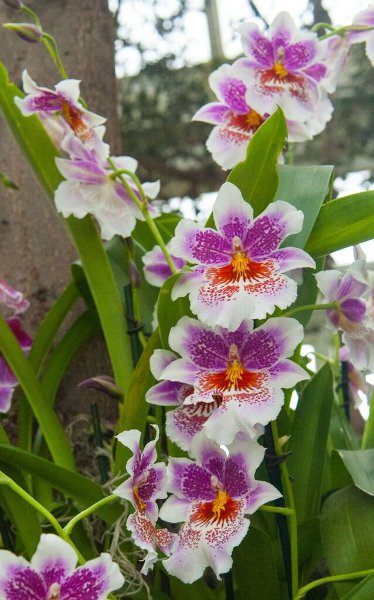
image copyright Peter Craig all rights reserved
Or do you prefer the showy flowers of xOncidopsis Memoria Martin Orenstein 'Lulu'.
Now, the naming of orchids is a complicated thing. However if you are uninterested in horticultural nomenclature, just skip down to the splendid Palm House.
Let us parse the name of this particular orchid. Oncidopsis is the genus name which is always italicized. Because it has "x", the multiplication sign, in front that tells us that this is a hybrid of two different genera.
The next piece of this orchid's name is Memoria Martin Orenstein. It is in Roman type, not italicized and has no quote marks, so it is not a cultivar [cultivated variety] name. It is that funky orchid grex business. Derived from the Latin noun grex, meaning 'flock', it is used to describe horticultural hybrids of orchids, where all of the seedlings grown from the resulting seed pod are considered to be in the same grex. Pause a moment, while I tell you that lilies also do this grex thing. All xOncidopsis Memoria Martin Orenstein had the same parents but can look quite different.
Finally we get to 'Lulu' which is a cultivar name, and all xOncidopsis Memoria Martin Orenstein 'Lulu' will look alike.
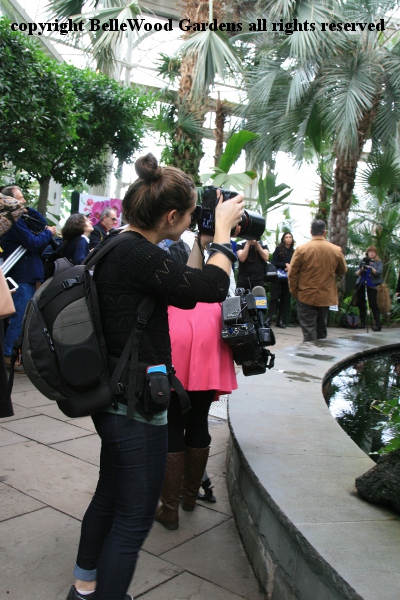
Press and their camera gear in the Palm House.
Enter the splendid Palm House of the Enid A. Haupt Conservatory, a stunning example of Victorian-style (after all, ground-breaking took place on 3 January 1899) glasshouse artistry. Take a few moments to admire the orchids cascading around the pillar-like cork bark "trees" in the pool. Then you could go directly to the Exhibition Gallery. Instead, let me suggest you do what we did at the press preview. Enter the Tropical Rain Forest. The orchids on display here are happily growing on the trees. Keep in mind that these orchids are epiphytes, like bromeliads. They do not want, can not survive being potted up in dirt. Follow the winding path through the trees that are the framework of the permanent displays, and offer an intimation of the wild jungle world of orchids. As you go, admire orchids and bromeliads in bloom, vines and groundcover plants.
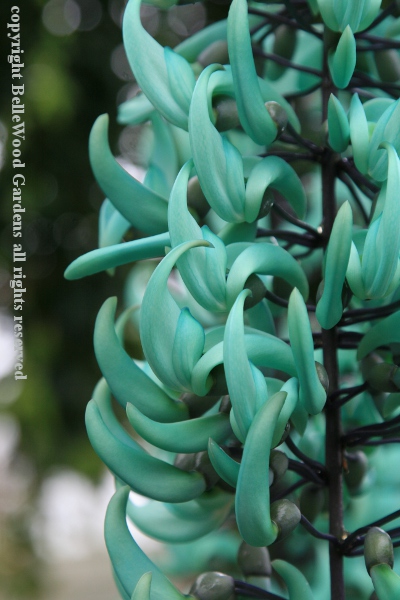
Not an orchid nor a bromeliad but a plant that enchants me, jade vine, Strongylodon macrobotrys.
The Victorian orchid hunters were rapacious. They would collect every orchid they could find on a site, then burn down the forest so no one else could collect any remaining remnants. They were funded by wealthy peers such as the Duke of Devonshire who set a trend when he began collecting orchids at his Chatsworth House estate in 1833. Orchids would be packed using less valuable orchids (no Styrofoam packing chips back then.) Then a slow ocean voyage to get then to some estate where a glasshouse might provide a suitable habitat.

A glass case in a glasshouse. A Wardian case, one of the orchidelirium vignettes.
Named for its accidental creator, Dr. Nathaniel Ward of London, a Wardian case is a sealed protective container for plants. He was raising moths and butterflies in bottles, you see. And a fern and a grass sprouted from the soil. He had a purpose-built container made, about 1829. Ferns and orchids could now thrive, sealed away from the polluted air of Victorian cities. The mania for growing orchids among the middle class owed much of its impetus to the new Wardian cases.
Today, wild orchids are protected from collection by the Convention on International Trade in Endangered Species of Wild Fauna and Flora (CITES). Most of the family is listed in Appendix II, so that exports require a CITES permit. Several species are listed in the more restrictive Appendix I; this means that all imports and exports must be accompanied by a CITES permit. There are people who attempt to smuggle them in.
When discovered (the United States Department of Agriculture employs beagles to sniff out countraband) the orchids are confiscated and those from international ports in the New York City area are sent to the New York Botanical Garden for their CITES Rescue Center Program, taking in and rehabilitate plants that have been illegally imported.
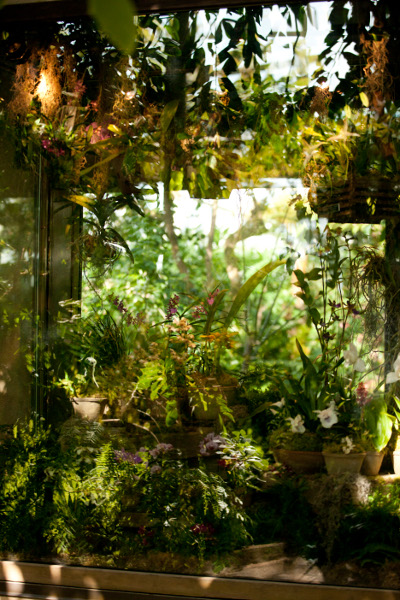
photograph by Ivo Vermeulen, courtesy of The New York Botanical Garden all rights reserved
A public display case for some of the rescued CITES Rescue Center orchids.

photograph by Ivo Vermeulen, courtesy of The New York Botanical Garden all rights reserved
One of the most fantastic orchids in this display is Angraecum sesquipedale, also known as Darwin's orchid. The white, waxy flowers are fragrant at night, to attract its nocturnal pollinator. Individual flowers can last a couple of months. Notice the extraordinarily long spur.
Charles Darwin postulated that the flower must be pollinated by a then undiscovered moth with an equally extraordinarily long proboscis. It was in 1903, 21 years after his death, that the moth was discovered and his conjecture vindicated. The story of this beautiful orchid and its hawk moth pollinator has come to be seen as one of the celebrated predictions of the theory of evolution.
This orchid, and the others in the case have survived the rough handling of their attempted smuggling. And so we can admire and marvel at them. However habitat destruction continues to be a serious threat. Fortunately for the hobbyist there are exquisitely beautiful commercially propagated orchids to enjoy - including hybrids that never existed in the wild.
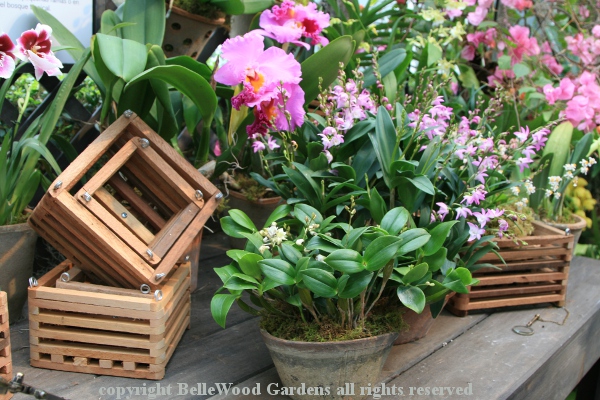
A vignette of a work bench for potting / repotting orchids displaying slatted wooden pots intended for hanging orchids as well as beautiful plants both large and small.

Another attractive display that mimics a brick wall to display orchids close to eye level.
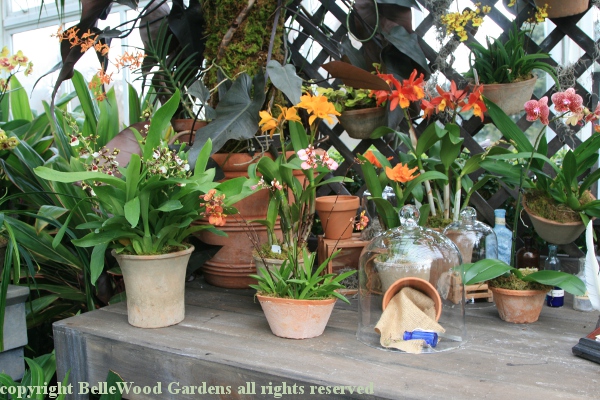
One with a focus on breeding / propagating - but be warned, raising orchids from their dustlike seed is very difficult as it involves test tubes of sterile agar and more. Makes you wonder how orchids manage on their own . . . . Orchids can be grown in nurseries using methods that are not harmful to wild populations, helping to satisfy the international demand for these beautiful plants and reducing collection pressure on wild populations.
Visit orchidelirium and enjoy it on several levels. It can be a visual treat with beautiful flowers and lush foliage. Plants are labeled so it can be a learning experience in that regard. Then with the vignettes gain some history.
Has a touch of orchid mania infected you? There are plants for sale at the Shop in the Garden.
Already have some orchids but need better information about caring for them? There are classes available - just check Adult Education for their offerings such as this one.
You can preorder tickets here .
Back to Top
Back to February 2016
Back to the main Diary Page






 . . .
. . . 









